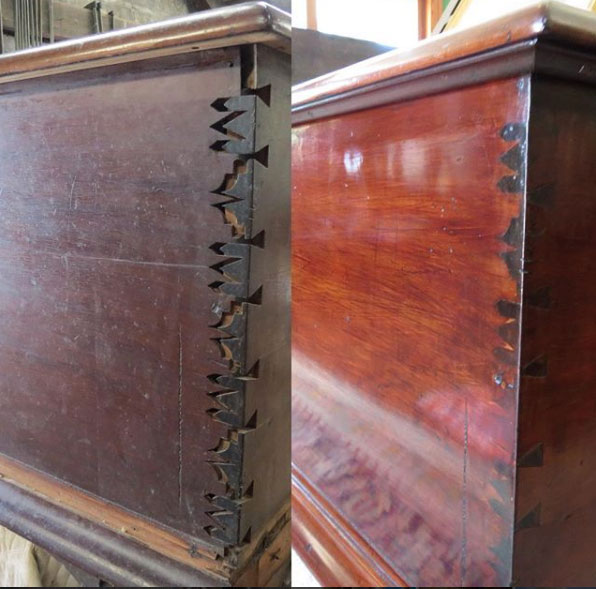Renew, Reuse, Recycle.
A phrase commonly used by clients we speak with is “They don’t make them like they used to”. Referring to a piece or set of furniture they cannot part with, there is acknowledgment that the materials and craftsmanship deployed when making them were superior than modern techniques. This sentiment is not one muddled by nostalgia, but rather a good observation into modern material science and manufacturing.
Mechanical efficiencies and mass production have led to somewhat of a throw-away attitude towards furniture. Don’t like it? Chuck it out. Not trendy anymore? Sell it.
Despite contemporary attitudes towards furniture, many of us still own unique hand-made solid wood pieces. Regardless of their existing condition, you should determine their historical and monetary value prior to parting with them. We have met dozens of people over the years who were unsure if it was worth paying to have their furniture restored, and more often than not, it was!
Renewing/restoring hand-made furniture is a recommended option for a few reasons; the main one being that you are most-likely never going to find one exactly like it. Antique pieces require more consideration due to the craftmanship and expertise needed to correctly restore them. We’ve seen some unfortunate amateur attempts to repair antiques and can confidently state that it will cost you more in the long-term if you decide to take the path of least resistance (and expense).

Restoration can involve everything from repairing joints, to French polishing, to repairing/replacing hardware. The goal with antiques isn’t to make it look new again, but to rather embrace the characteristics that make it a genuine antique. One of the easiest signs that you took your antique furniture to the wrong place to have it restored is a promise that “we’ll make it look brand new again”; that is not the objective.
Stripping and refinishing is an option for solid-wood pieces that are valuable but not quite an antique. Our industrial facilities and finishing products makes this process more efficient than if you were to attempt it yourself, and the typical aim of this service is to revive the piece back to its original condition.
Lastly, and often the most determining factor when renewing furniture, is value and expense. We inform every client if the scope of work exceeds the estimated value of the furniture. Some clients consider their furniture an investment, while others have a strong sentimental bond to it. The former wants to protect their asset for potential future resale; the latter has hardly ever considered what the piece would fetch on the market. We appreciate both backgrounds and are here to help whoever wants to keep unique furniture around for the foreseeable future.
